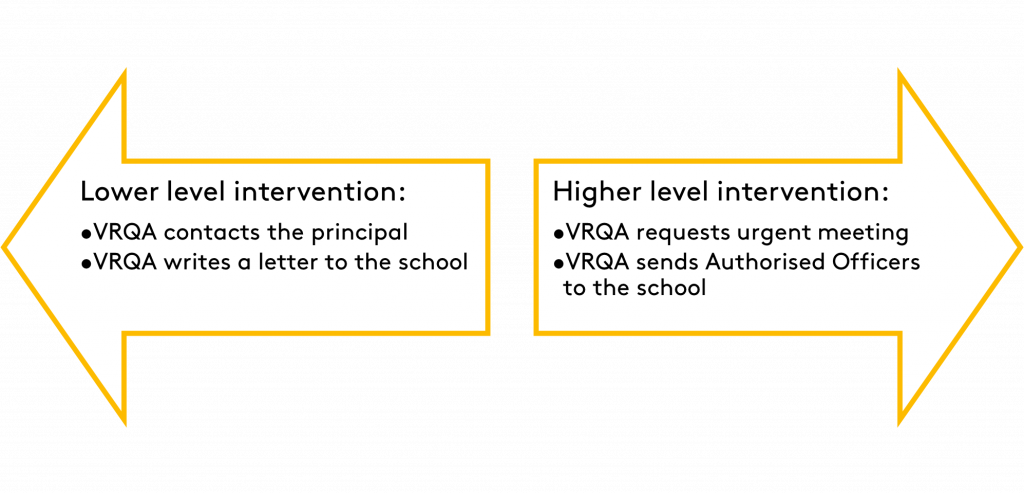The Victorian Registration and Qualifications Authority’s (VRQA) School intervention framework for risks relating to the care, safety and welfare of students complements the existing school review process by explaining how the VRQA will make decisions about intervention action to ensure the safety of children in Victorian schools.
By releasing the framework, the VRQA is empowering Victorian schools to predict and understand intervention action.
The VRQA may intervene in the administration and running of a school to protect students when child safety risks are identified, for example, through media reports, referrals from other agencies such as the Commission for Children and Young People, or complaints.
Indicators of child safety risks
The framework identifies indicators of increased child safety risks, and an increased need for high-level intervention as:
- School leadership is not responding appropriately to allegations.
- The school does not have a culture of child safety.
- The school has a history of poor governance.
- Allegations indicate there is a current risk of harm to students.
- Allegations are of a serious nature and/or consequences to students are serious:
- may or do constitute reportable conduct or a criminal offence;
- multiple incidents or complaints;
- involve a teacher, employee or volunteer;
- failure by school to report allegations of reportable conduct or criminal conduct;
- failure by mandatory reporter to report abuse;
- imminent risk to students; students have suffered physical, sexual, emotional abuse or neglect etc.
This demonstrates the importance of strong reporting processes and procedures in schools, as well as regular refresher training for staff to empower them to meet child safety reporting obligations. For more information about identifying child safety blind spots, you can watch our 2nd September webinar here.
Scale of intervention
The VRQA framework also explains the scale of intervention it might take in a school when responding to child safety risks. The lower end of intervention involves contacting the Principal, or writing a letter to the school, while higher level intervention involves sending Authorised Officers to the school to investigate.

How we can help
Moores has extensive experience dealing with VRQA reviews of schools, handling intervention action such as enforceable undertakings, and helping you do the ground work to prevent intervention in the first place. We can help implement strong child safety measures and governance practices to best equip your school to provide a safe environment for all students.
Please contact us for further assistance.